International Journal of Sexual and Reproductive Health Care
Determinants of HIV Prevention amongst Adolescents in Zimbabwe: The Case of Dzivarasekwa, Harare
Norman Makunika1* and Lianora Manyange2
1Centre for Population Studies, University of Zimbabwe, Harare, Zimbabwe
Cite this as
Makunika N, Manyange L (2020) Determinants of HIV Prevention amongst Adolescents in Zimbabwe: The Case of Dzivarasekwa, Harare. Int J Sex Reprod Health Care 3(1): 051-060. DOI: 10.17352/ijsrhc.000014The utilization of Sexual and Reproductive Health by adolescents is determined by a myriad of factors. This research conducted between August 2017 and May 2018 analyzes the determinants of HIV prevention amongst adolescents in Zimbabwe. Qualitative and qualitative research methods were triangulated. A total of 200 questionnaires were administered to adolescents aged 15-19 years to collect quantitative data. The study conducted Focus group discussions and Key informant interviews to solicit qualitative data. The findings showed that, a significant number of adolescents were engaging in sexual activities. Adolescents were aware of most of HIV prevention methods: however their knowledge was not being translated into utilization of these methods. This was influenced by a lot of factors at individual, interpersonal, organization, community and national levelsLow uptake of prevention services was mainly attributed to high cost, low awareness, lack of proper knowledge about the benefits of the services. Recommendations were also offered to service on how HIV prevention services uptake can be improved amongst adolescents.
Introduction
Adolescents’ sexual and reproductive health has been overlooked historically despite the high risks that countries face for its neglect. Adolescents are predisposed to be at the risk for HIV infections because of challenges emanating from their dramatic, and physical emotional and social experiences. Various political, economic and socio-cultural factors restrict the delivery of information and services, health workers often act as barriers to care by failing to provide young people with supportive non- judgmental youth appropriate services. Though massive education as indicated by, information and communication programs have been rolled out across different countries, in Zimbabwe research has shown that the uptake of HIV prevention strategies among adolescents has been a problem. In Zimbabwe, access to testing amongst adolescents remains a challenge in many regions, at 44.5% for females and 24.3% for males [1-10]. Thus, relevant research programs are urgently needed to enable the development of strategies that are best suited for adolescents’ HIV prevention strategies to improve the uptake of services as well as to reduce the HIV prevalence and incidence rate amongst adolescents to achieve UNAIDS 90:90:90 targets by 2030 set by UNAIDS and ratified by the Government of Zimbabwe.
Statement of the problem
Ideally, HIV prevention programs have mitigated the sexual and Reproductive Health risks of young people. They help adolescents to abstain, delay sexual debut, decrease sexual frequency and number of sexual partners, and improve condom use. If properly implemented, they provide and improve the use of Pre and Post exposure Prophylaxis, adoption of safe sex practices and to uptake of treatment services for sexually transmitted infections. However, in most government programs, it is assumed that adolescents are not sexually active, thus issues to do with their sexuality are often not discussed and included in National Health programs, especially those to do with Sexual and Reproductive health [10-14].
However, in Sub- Sahara Africa, the region most seriously affected by HIV and AIDS epidemic in the World, HIV prevention strategies have not produced desirable results [15,16]. Despite various efforts, more than half of all new HIV infections in the world have occurred among adolescents and young people under the age of 25, which suggest that either the current interventions are not adequate, or there is need to examine the acceptability of these interventions by adolescents [17-20].
Unless something is done, the above intervention offers little promise in improving the number of people that will accept and use the service. Therefore, a research to establish the determinants of adolescents towards HIV prevention strategies was highly needed so as to inform policy and decision making.
Objective of the study
The general objective of the study was to:
Document the Determinants of HIV prevention among adolescents in Dzivarasekwa.
Specific objectives
The Specific Objectives were to:
♦ Assess the knowledge about HIV prevention strategies amongst adolescents;
♦ Assess Determinants of HIV prevention among adolescents
Methods of the study
Study area and target population: The study was carried out in Dzivarasekwa High Density Suburb. The study was carried out in Dzivarasekwa High Density Suburb. It is in Harare West District, about 15 km from the Harare Central Business District, situated in Wards 27 and 28 of the greater Harare City Council. It consists of 3 townships, which are Dzivarasekwa Extension, Glaudina as well as Dzivarasekwa 1, 2, 3 and 4. According to CSO (2012) Dzivarasekwa is reported to have a population of 69 824, with 46% of the population below 19. All five wards in the area were purposively selected. Several factors were taken into consideration in selecting the study area, among them being the proximity of the areas to the researchers, the high prevalence rate of HIV as well as STIs amongst adolescents, availability of resources to the researcher amongst others. All five wards in the area were purposively selected and the target population of this study was comprised of boys and girls of Age Groups 15-19. A sample of 200 respondents was selected using stratified random sampling method in which different age categories were divided into different strata [20-25].
Sample size determination
Sample Size N=Z2*p*q/e2
Where:
Z = the standard normal deviation set at 1.96 which corresponds to 95% confidence level
p = proportion of the target population (Adolescents12-19) (0.15)
q = (1-p) proportion of total population excluding the target population (adolescents 12-19) (0.85)
e = Error margin (0.05)
N= 195
Sampling procedure
Sample proportionately, proportional to size was also be used to further select the desired number of respondents from different locations of Dzivarasekwa namely, Dzivarasekwa 1,2,3,4, Dzivarasekwa Extension and Glaudina. The following formula was used to calculate the different proportions:
nn= (Nn/N) *n
Where nn = Region Sample
Nn = Total Adolescents in location n
N = Total adolescents (12-19)
For example, for Dzivarasekwa Extension:
36/100*195
= 72 respondents
Dzivarasekwa Sample Proportion = 73 adolescents (males and females)
Female Proportion = 51/100*72
= 36.73
= 37 female Adolescents
Male respondents =72 (total) -37 female respondents
= 35 male Adolescent Respondents.
The sampled adolescent respondents for the other 2 (two) regions (Glaudina and Dzivarasekwa1, 2, 3, 4) were calculated using the formula used for Dzivarasekwa Extension. Thus the total expected respondents were 213, and the non-response rate was factored in, the researcher ended up having 200 participants Table 1 [25-35].
Data collection methods and tools
Desk review: Desk review and secondary data sources was employed to explore and gather contextual data to try and understand the Knowledge levels of HIV prevention as well as services uptake amongst adolescents. Documents reviewed were purposively selected by the researcher with the help and guidance of the research supervisors as well as Key Informants. Some of these documents includes: Adolescents Sexual and Reproductive Health Strategy, ZIMPHIA Report, HIV testing Registers, STI treatment and Care Registers, ZDHS, MICS, MIMS amongst others. The document review will also focus on issues relating to adolescent’s HIV prevention and care, including the availability, accessibility for adolescents’ services.
Survey: The study employed surveys as a data collection method, to collect quantitative data to determine the levels of knowledge as well as the determinants of HIV prevention amongst adolescents. A sample survey has been chosen for its effectiveness to provide accurate statistical data from the respondents. It is also a cheap and quick method of data collected. Hence if fairly suits the limited resources as well as time in the context of this study.200 Questionnaires were administered, and stratified random sampling technique was employed to select respondents. Location of residence and gender were used to subdivide the target population into different strata’s and a simple random sampling technique was used to select the final respondents.
Focus group discussions: To compliment quantitative data obtained using questionnaires, 5 (five) Focus Group Discussions (FGDs) were undertaken to solicit data on community beliefs and attitudes towards the HIV prevention strategies among adolescents. FGDs were undertaken to get the adolescents’ perceptions on the acceptability of HIV prevention strategies among adolescents bearing in mind the social, economic and cultural processes that influences their perceptions. According to Morgan (2014), a focus group discussion is a data collection technique that collects data through group interaction and the topic is determined by the researcher.
Age cohorts where be used for the selection of respondents and each FGD will have between 8-12 respondents and at least one participant will be drawn from each one of the 3(three) locations of Dzivarasekwa. Simple random sampling without replacement and willingness to participate will be the basis for selection into the study. The discussions will be held either in schools or in community halls, usually away from public. The proceedings will be in Shona, their mother tongue to ensure maximum participation and understanding of concepts [30-33].
The proceedings of the FGDs were tape-recorded, in addition to note taking. Two research assistants, a male and a female, both Sociology graduates and Masters in Population Studies students at the University of Zimbabwe moderated and took notes. These were selected to ensure maximum participation as well as to ensure and maintain high quality data standards. The moderator started the discussion by explaining the purpose of the study and ensures participants of the confidential nature of the discussion [33,34]. This was being followed by introductions, to give time to the participants to familiarize with each other. The moderator will also encourage the participants to feel free and express their opinions. The moderator will open the discussion by making a statement and ask the respondents to comment [34-39].
Key informant interviews: A total of four Key Informant Interviews (using Key Informant Interview guide) were used to assess the knowledge of the uptake of HIV prevention initiatives and determinant factors from key Informants. The KIIs involved one Sister In charge, one Service provider, one Community Health Worker and one School Headmaster. These people interact daily with adolescents as they seek sexual and reproductive Health Services, thus they can provide useful knowledge about the service uptake as well as client perceptions towards the HIV prevention strategies.
In depth interviews: A total of six in depth Interviews (using in depth Interview guide) were carried out with selected respondents. Convenient sampling was being used for the selection of respondents from those accessing HIV prevention services at Dzivarasekwa Health facilities. The In-depth interviews helped solicit information about personal experiences, levels of knowledge and perceptions towards HIV prevention strategies.
Data collection tools
Questionnaire: A questionnaire is an instrument that comprises of a series of questions that are filled by the respondent. It is a document containing questions designed to solicit information appropriate for analysis. The study under the Survey method employed the questionnaire as a tool to collect data on individual perceptions on HIV prevention strategies.
Focus group discussion guide: Focus group discussion guide is a list of guiding questions, intended to be used to guide the flow of discussion on a focus group discussion, determined by the research according to the objectives of the study. In this study the researcher conducted five focus group discussions with the help of a focus group discussion guide.
Key informant interview guide: A key informant interview guide is a list of questions intended to be used by the researcher, to inform and guide the flow and course of a key informant interview. The researcher will conduct Key informant interviews with the help of key informant interview guide to avoid asking irrelevant questions.
Data management and analysis
The data quality was thoroughly safeguarded and managed throughout the data collection, data entry, data validation and data cleaning processes. During data collection, the researcher employed the services of two graduate research assistants to ensure the quality of the data being collected [40-45].
The data was captured through extensive note taking and audio taping and later transcribed, translated and typed. Quantitative data from the field checked and edited for accuracy, missing data, validity and consistency by the researcher. After data cleaning, data was coded and entered on SPSS for analysis. For Qualitative data, transcription of the FGDs on recorders was done and the services of professional linguists were sought to translate to English. Thematic analysis was used for data analysis, in line with the study objectives [45-55].
Ethical considerations
Ethical review: The study protocol will be sent to Medical Research Council of Zimbabwe (MRCZ) for ethical approval.
Informed consent: Written informed consent forms will be obtained from each research participant above 18 years. Parental/Guardian Consent for those below 18 years will be sought, as well as assent from the adolescent. Participants will be debriefed of the nature of the study before they take part and an opportunity to ask questions until they fully understood the study and the implications for participating will be given.
Risks: Measures will be taken to identify, anticipate and minimize any potential long-term effects on individuals or group resulting from the survey. FGD participants will be informed of the decision to tape record the conversations.
Confidentiality, privacy and data security: The data was handled and processed whilst ensuring the highest levels of Confidentiality, Privacy and Security requirements. Participants were assured of the confidentiality and security of the information they would have shared. Pseudo names were used to replace all names and personal circumstances which may lead to the identification of participants.
Participant withdrawal: Research participants are not forced or coerced to participate in the study. Participants reserve the right to withdraw from the study at any stage of the study, for whatsoever reason.
Findings of the study
This section presents findings on determinants of HIV prevention Method use in the last 12 Months for those who had reported to having sex in the last 12 months. These factors include religion, exposure to media, attitudes of Health workers and school and educational policies. The study analysed and made a cross tabulation of the relationship between HIV prevention method uses by religion. Respondents belonging to Catholic 68% used prevention methods in the last 12 months, Pentecostal (91.3%), Protestant (50%), Traditional 81.8% Apostolic83% and Muslims 100% (Table 2).
In FGDs, it was highlighted that, religion has a major influence on SRH issues of adolescents among its followers. It was noted that:
Adolescents should be taught that they should not have sex before marriage. If they are to use any HIV prevention method, it should be within the dictates of the Word of God, so as to avoid adultery and fornication. Religion does not allow sex before marriage and adolescents should strive to get married as virgins as this brings trust in the marriage.
Exposure to the media
Respondents were asked if they had heard about HIV prevention from the media. The majority of the survey respondents reported that they had heard about HIV prevention methods on pamphlets 90%, the radio (86%). Respondents identified other sources of information such as television (42%) and newspaper (76%) and the Internet (83%) (Figure 1).
Sources of prevention services
Adolescents who had used a prevention method in their sexual encounters were asked the source of the contraception. Figure 4.21 shows the sources of HIV prevention methods for sexually active adolescents. More than half of the respondents (53%) of adolescents who had used a HIV prevention method in the past 12 months stated that they got the method from a health institution (Government, Mission or Rural District Hospital, private doctors, clinics), while others got from the pharmacy (14%) and supermarket (20%). The sexually experienced adolescents who had used contraception also stated that they had received from partners (11%) Figure 2.
Availability and accessibility of HIV prevention
Sexually active adolescents were asked if it was difficult or easy to access to HIV prevention methods. The majority of the sexually experienced adolescents reported that it was difficult to access the methods (41%) (Figure 3).
The study analysed the relationship between accessibility of HIV prevention methods and background variables. Table 4.30 shows that educational attainment, marital status, religion and living arrangements were statistically associated with accessibility of HIV prevention. Those who were in secondary/ tertiary schools reported that accessing HIV prevention was difficult (37.6%) compared to those who had never been to school 58.5% (p=0.000). The never married adolescents were more likely to report the difficulty in accessing HIV prevention (94.4%) than the married adolescents (38.0%) (p=0.000). Respondents who belonged to the Pentecostal/Protestant and Catholic churches were more likely to report on the difficulty in accessing prevention methods (39.7% and 50%, respectively) than the Apostolic (44.4%) and those who did not belong to any religion (38.9%) (p=0.155). Most of the respondents who lived with both mother and father reported that it was difficult accessing HIV prevention (70.6%) compared to those living with husband/ wife (38.4%) and mother or father only (43.3%) (p=0.007). There were no statistically significant relationships between accessing HIV prevention and age and sex (Table 3).
In addition, adolescents were asked the reasons why it was difficult for them to access HIV prevention. Most of the sexually experienced adolescents stated that it was difficult to access the methods because of the attitudes of health workers (18%), some stated they were embarrassed to be seen accessing (26%), and others cited the distance (19%) and lack of money (18%) (Figure 4).
While most respondents highlighted that health care providers disapprove. KIIs reported that, clinics and hospitals have sections that deal with confidential SRHR, centres that provides victim friendly services, where pre and post exposure services are being provided. In one KII, it was remarked:
Most clinics around the country have youth friendly centres that provide youth friendly services and SRH to adolescents.”
Adolescents were asked about strategies that would improve accessibility of HIV prevention methods such as condoms, Circumcision and pre and post exposure prophylaxis. The majority of respondents stated that HIV prevention methods should be issued for free (94%) while others stated that they should be offered without discrimination of both age and sex (91%) and 79% stated that they should be made available in schools and learning institutions (79%) (Figure 5).
Attitude of health workers
In some cases, some adolescents reported that their access to services was hindered due to the negative and unfriendly attitude by health care providers. Most of adolescents reported that due to health care providers’ disapproval, they failed to secure the HIV prevention services they required (Figure 6).
Negative attitudes of health workers were also highlighted in FGDs and KIIs. Adolescents stated, health workers often reject to give those condoms and other services because of their age. In some cases they does not maintain confidentiality issues of adolescents. In an FGD, it was mentioned that:
I once went to get condoms from the clinic during the day, the nurse objected and refused me condoms saying that I was too you. She said that she is going to tell my parents that I was engaging with prostitutes if I come back again.
A KI, a health provider remarked:
It is not every time those adolescents are refused condoms, other HIV prevention such as circumcision are being offered for free by healthcare providers. There has been considerable improvement due to several trainings of nurse on SRH.
Another Health care provider attributed the lower access to prevention services by adolescents to their lack of interest in health care programmes. He noted that:
These adolescents are not interested in HIVB prevention as well as SRHR programs that we conduct here at the clinic. They think that they will receive ill treatment from the healthcare providers. However, this is not the case, we have established youth centres and we conduct various programs that are meant to empower adolescents with relevant knowledge about ASRHR, but adolescents do not come for these programs.
In a FGD, adolescents stated that they prefer to get HIV prevention services such as condoms from the pharmacy and supermarket because they would not be asked questions about their age. This was supported by another participant who reiterated that:
For adolescents, it is better for us to get condoms from the pharmacy of supermarket because there no one will ask us about our age. At clinics, the nurse tends to as several questions about your age and what you intend to do with condoms, they will ask if your parents know that you are having sex.
Availability of condoms and SRH services in schools
Parents/ Guardians representatives were asked in a KII whether they would approve and allow the provision of condoms and other SRH services at schools so that adolescents can freely access them. The parents strongly objected to this. One parents stated that:
This initiative if approved will strongly disrupt and affect the parent teacher’s relationship, teachers will lose respect, and students will become mischievous. How can there be respect if teachers and students meet in the same toilets taking condoms...?” This is bad, and that idea should not be accommodated in an educational set up...”
Another respondent had this to say: The schools environment is a learning environment; it should be kept and respected that way. Once we start allowing condoms to be freely distributed at schools, this raise concerns over the motives behind why our students go to school. Teachers can even sexually abuse our children since they can easily convince the pupils that protection is readily available.
However, one participant supported the distribution and provision of condoms at schools as it will help ensure that our students will be able to learn effectively without being worried about either being infected or falling pregnant. This was supported by quantitative data (67%) in which adolescents supported the idea of the provision of condoms at schools. In a FGD some adolescent boys had this to say:
“Having condoms is beneficial to adolescents, they can easily protect themselves. It is better to let us protect ourselves that to deny us condoms and indirectly exposing us to HIV infections”.
Community level determinants
Community level factors such as social and cultural norms have a bearing in the use of prevention methods by adolescents in a community. Factors such as geographical accessibility of the health facilities in terms of distance, cost and accessibility have been analysed to try and measure their impact on the use of prevention methods by adolescents in the past 12 months.
Social and cultural norms
In a FGD, adolescents noted that, the use of prevention methods by adolescents is reflected badly on parents or guardians by the community. If a child is seen buying of taking condoms from the shops of health facility, this will be seen to be as influenced by bad parenting skills. So, parents in order to maintain their reputation tend to discourage the use of prevention methods by their adolescents. In a FGD, one adolescent noted:
The real problem with condoms is that, if you are seen with condoms, or asking to access them, it is a sign that you are no longer a virgin, in our culture, it brings shame to your family as well as your parents to be seen engaging in sexual intercourse without being married. It is viewed as not good for the family as well as your parents’ social status’.
This was supported by another respondent. In a Key informant interview with a local Pastor. He observed the view that, Adolescents having sex before marriage whether protected or unprotected sex it is something that should not be permitted, it is a sin against God who warns against fornication in his word, it is against our cultural practices as the Zimbabwean people. It was remarked that:
In our culture, if an adolescent is caught having sex, it means that they want to be married, therefore, the girl is sent to the man she is having sex with to be his wife whilst the boy is made to take the girl as their wife. In addition, the boy’s family is expected to pay damages to the girl’s family and to the chief, as sigh that they have violated and disrespected the girl’s family as well as the traditional laws of the land’
Cost of prevention methods
Sexually active adolescents were asked about the cost of contraceptive methods they had used in the past 12 months. The majority (43%) reported that HIV prevention methods such as circumcision cost two dollars. Others reported that they had bought the Prevention method for Five dollars (26%), One dollar (7%) and free of charge (24%) (Figure 7).
In an interview with a service provider, it was mentioned that, in most clinics countrywide, male circumcision is provided free of charge in council and government clinics. However, in private hospitals and clinics, varied amounts are being charged for the procedure. He remarked that:
At Council clinics, circumcision is free but at some clinics and hospitals they pay a consultation fee. It is perhaps this consultation fee that adolescents cannot afford to pay hence why they say circumcision is expensive.
Geographical accessibility
Adolescents who reported to have had sex in the past 12 months were also asked the distance to the nearest source of HIV prevention services. Most of them reported that the distance was 1-2 km (26%). Others reported that the distance was long, 3-4 km (23%), 5km (17%) and above 5 km (7%). (Figure 8).
The relationship of prevention methods use, and the distance travelled by adolescents was analysed. The relationship was found to be statistically significant. Those who travelled under 1 km 86% of them used prevention methods, whiles only 54% of those who travel more than 5 kms used prevention method (Table 4).
Discussion of Findings
The study revealed that, the use of HIV prevention methods amongst adolescents was influenced by the levels of perceived severity as well as their perceived susceptibility depending on their exposure to cues of action. These in turn are influenced by the socio-economic factors, beliefs, attitudes, academic background, level of prevention knowledge, and levels of self-confidence as stipulated by the Health Belief Model (Becker, 1984). These factors operate at Individual, Interpersonal, Organizational, Community and National levels as highlighted in the Social Ecological Theory by McLeroy, et al. [31].
Acceptability of HIV prevention strategies amongst adolescents
Like what is postulated by the Health Belief Model, adolescents in Dzivarasekwa use of HIV prevention strategies is determined by their perception of the treat of getting infected with HIV (the severity of HIV and their perceived susceptibility). In the survey, it was observed that those adolescents cohabiting were more likely to use HIV prevention methods than those formally married. Adolescents with more than one sexual partner were more likely to have used HIV prevention method in their last as well as sexual encounter in the last 12 months as compared to those adolescents with less one sexual encounter. During their first encounter, some adolescents especially those below the age of 15 were less likely to use prevention in their first encounter, due to their less perceived susceptibility to getting infected during their first encounter. This was the case with adolescents having sex with virgins, they were less likely to use prevention methods due to their perceived less susceptibility.
A third of respondents in the survey reported that they are less likely to be infected by HIV in their lifetime. From the foregoing, though the majority of respondents rated their chances of HIV infection as moderate to good, basing on their assessment of lifestyle, number of sexual partners, . However, this was found to be worrisome considering the levels of HIV prevalence in Zimbabwe especially amongst adolescents which is on the increase.
The results compared well with the Young Adult Survey in Zambia (2017), were perception of risk of adolescents who knew HIV prevention methods was at 43%
In addition to the above, in the survey, it was shown that the acceptability of HIV prevention methods was highly associated with their perceived benefits associated with that method. For instance, the most widely used prevention methods by adolescents in Dzivarasekwa were condoms (84%). This was necessitated by their perceived dual protection benefit of protecting against HIV and pregnancy at the same time. Though subjective costs such as reducing sexual pleasure, were highlighted by respondents. It results from the survey shows that due to their perceived benefits, adolescents were more likely to use condoms.
With regards to the use of other HIV prevention methods such as pre and post exposure prophylaxis, their high costs was highlighted as a deterrent to the use of them as an effective HIV prevention method. Adolescents preferred to use a prevention method that has lower subjective as well as purchasing costs.
More so, distance to the health facilities was also highlighted in the research as a possible cost that directly affects the use of prevention methods. Those staying less than one kilometer to a health facility were more likely to use HIV prevention methods than those staying more than 5 kms away. Thus, distance as to the nearest source of prevention method was seen as a cost that hinders adolescents’ use of HIV prevention methods.
Availability and accessibility of HIV prevention
The study in KII revealed that, condoms and circumcision were the only HIV prevention strategies being offered in most public health facilities. Pre and post exposure prophylaxis being provided at private hospitals (only 10%) is beyond the reach of the majority in Dzivarasekwa. Though circumcision was being offered for free in Dzivarasekwa, the high subjective costs associated with the method acted as a hindrance to most adolescents who never wanted to experience the pain.
In Dzivarasekwa (41%) of adolescents noted that it was difficult to access prevention methods freely in public health institutions. This is contrary to a study conducted in Tanzania where only 39% of adolescents highlighted that it was difficult for adolescents to access HIV prevention services (UNESCO, 2017).
Adolescents highlighted that, cost of prevention methods, long distances to health facilities, disapproval and negative attitudes from health care providers (9%) continue to be their challenge in accessing and using HIV prevention methods. Another reason cited was the issue of healthcare workers denying adolescents prevention methods such as condoms citing the legal age of majority as well as several policies as their justifications.
Though KIIs reveal that there are multiple efforts by government to improve adolescent’s access to SRH services. Adolescents suggested that providing condoms in the community as well as would help increase accessibility of condoms amongst adolescents. These findings were supported by the findings of a situational analysis of the provision of SRH services to adolescents in Southern Africa which found out that, the provision of condoms in schools and communities will go a long way in reducing the incidence rate of HIV as well as cases of adolescent pregnancies (UNESCO, 2016).
- Alemayehu T, Haider J, Habte D (2010) Determinants of adolescent fertility in Ethiopia. Ethiopian Journal of Health Development 24: 30-38. Link: https://bit.ly/2ZrW2pD
- Rise UBR Reproductive Health Outcomes & Contraceptive Use among US Teens Print.
- Asiimwe JB, Ndugga P, Mushomi J (2013) Socio-Demographic Factors Associated with Contraceptive Use among Young Women in Comparison with Older Women in Uganda. School of Statistics and Planning, Makerere University, Kampala, Uganda. Link: https://bit.ly/2GMTEDb
- Batwala VK, Nuwaha F, Mulogo EM, Bagenda F, Bajunirwe F, et al. (2006) Contraceptive Use Among in And Out of School Adolescents in Rural southwest Uganda. East Afr Med J 83: 18-24. Link: https://bit.ly/3k7TTXO
- Bender SS, Kosunen E (2005) Teenage contraceptive use in Iceland: a gender perspective. Public Health Nurs 22: 17-26. Link: https://bit.ly/2GGj7Oz
- Blanc AK, Tsui AO, Croft TN, Trevitt JL (2009) Patterns and Trends in Adolescents’ Contraceptive Use and Discontinuation in Developing Countries and Comparisons with Adult Women. Int Perspect Sex Reprod Health 35: 63-71. Link: https://bit.ly/3kjG8Wn
- Campbell MM, Prata N, Potts M (2013) The impact of freedom on fertility decline. J Fam Plann Reprod Health Care 39: 44-50. Link: https://bit.ly/3bM7PE0
- Caro Alejos S (2015) Early pregnancy in Nepal: Barriers and facilitator factors for its prevention: Qualitative research in 3 districts in the Terai. Restless Development. Nepal.
- Centre for Reproductive Law and Policy (CRLP) and the Child and Law Foundation (CLF) (1998) State of Denial: Adolescent Reproductive Rights in Zimbabwe. Harare.
- Central Statistical Office (CSO) and Macro International, Zimbabwe Demographic and Health Survey, 1988, Calverton, MD, USA: CSO and Macro International, 1989. Link: https://bit.ly/3k3uOgP
- Central Statistical Office (CSO) and Macro International (1995) Zimbabwe Demographic and Health Survey, 1994, Calverton, MD, USA: CSO and Macro International. Link: https://bit.ly/33xBtt9
- Central Statistical Office (CSO) and Macro International, 2000, Zimbabwe Demographic and Health Survey, 1999, Calverton, MD, USA: CSO and Macro International. Link: https://bit.ly/2ZtaRrU
- Central Statistical Office (CSO) and Macro International, Zimbabwe Demographic and Health Survey, 2005-2006, Calverton, MD, USA: CSO and Macro International, 2007.
- Chandra-Mouli V, McCarraher DR, Phillips SJ, Williamson EN, Hainsworth G (2014) Contraception for adolescents in low and middle-income countries: needs, barriers, and access. Reproductive Health Journal 11:1. Link: https://bit.ly/3iwIUqo
- Chidima E, Kharel N, Jia X, Tembo S (2014) Sexuality and Contraceptive Use Among Adolescents from Cultural Point of View. Turku University of Applied Sciences Thesis
- Chorwadza A, Makumbe K, McFarland W, Wyrod R, Woelk G, et al. (2011) Beyond Sugar Daddies: Intergenerational Sex and AIDS in Urban Zimbabwe. AIDS Behaviour 15: 1275-1278. Link: https://bit.ly/3bQDiVM
- Chazovadii B, Chuma M (2013) Rural Highway Service Centres And Rural Livelihoods Diversity: A Case of Ngundu Halt in Zimbabwe. Russian Journal of Agricultural and Socio-Economic Sciences, 5. Link: https://bit.ly/3k4VPAq
- Concecaio M, Almeidaa C, Aquinoa EM, Gaffikinb L, Magnanic JR (2013) Contraceptive use among adolescents at public schools in Brazil. Rev Saúde Pública 37. Link: https://bit.ly/2GMRC61
- Conklin MM (2012) Adolescent Sexual Behaviour: Demographics, Advocates for Youth, FACTS. Link: https://bit.ly/3hoYgff
- Cortez R, Saadatb S, Marindac E, Odutolud O (2016) Adolescent Fertility and Sexual Health in Nigeria: Determinants and Implications. World Bank’s Health, Nutrition, and Population Global Practice, Washington DC, USA. Link: https://bit.ly/32gBhyT
- Kinaro JW, Kimani M, Ikamari L, Ayiemba E (2015) Perceptions as a barrier to Contraceptive Use Among Adolescents: A case Study of Nairobi, Kenya. Population Studies and Research Institute (PSRI), University of Nairobi, Kenya 7: 85-87. Link: https://bit.ly/2RsZgEZ
- Kinaro J, Kimani M, Ikamari L, Ayiemba EHO (2015) Perceptions and Barriers to Contraceptive Use among Adolescents Aged 15 - 19 Years in Kenya: A Case Study of Nairobi. Health 7: 85-97. Link: https://bit.ly/3k5HUdf
- Korra A (2002) Attitudes toward Family Planning, and Reasons for Nonuse among Women with Unmet Need for Family Planning in Ethiopia. Calverton, Maryland USA: ORC Macro. Link: https://bit.ly/32j68uE
- Manlove J, Ryan S, Franzetta K (2003) Patterns of contraceptive use within teenagers' first sexual relationships. Perspect Sex Reprod Health 35: 246-255. Link: https://bit.ly/2GMQejP
- Manlove J, Welti K, Barry M, Petersen K, Schelar E, et al. (2011) Relationship characteristics and contraceptive use among young adults. Perspect Sex Reprod Health 43: 119-128. Link: https://bit.ly/3hkBhCe
- Marline JW (2014) Determinants of Teenage Fertility in Coast Province: Evidence from the 2008/9 Kenya Demographic and Health Survey (KDHS). Link: https://bit.ly/2Rfp6fl
- Marrone G, Abdul-Rahma L, De Coninck Z, Johansson A (2014) Predictors of Contraceptive Use Among Female Adolescents in Ghana. Afr J Reprod Health 18: 102-109. Link: https://bit.ly/33fNbIw
- Mathison S (1988) Why triangulate? Educational Researcher 17: 13-17. Link: https://bit.ly/35sj6IC
- Mbambo DE (2009) Factors contributing to adolescent mothers' non-utilization of contraceptives in the Piet Retief area, University of South Africa, Pretoria. Link: https://bit.ly/32hFl1K
- Mbokane A (2009) The utilisation of contraceptives by women who requested termination of pregnancy services in the Gert Sibande District (Mpumalanga), University of South Africa, Pretoria
- McLeroy KR, Bibeau D, Steckler A, Glanz K (1988) An Ecological Perspective on Health Promotion Programs. Sage Journals 15. Link: https://bit.ly/3hikeRd
- Mehra D, Agardh A, Petterson OK, Ostergren P (2012) Non-Use of Contraception: Determinants Among Ugandan University Students. Global Health Action 5. Link: https://bit.ly/35tM5vs
- Miano M, Mashereni S (2014) Knowledge, perception and information that Kenyan adolescents have regarding use of contraceptives. Kenya. Link: https://bit.ly/2ZrHdDm
- Miller BC (2002) Family influences on adolescent sexual and contraceptive behaviour. J Sex Res 39: 22-26. Link: https://bit.ly/33gqWlH
- Ministry of Health and Child Care (2016) Zimbabwe National Adolescent Fertility Study, Harare.
- Ministry of Health and Child Care (2009) National Adolescent Sexual and Reproductive Health Strategy 2010-2015. Harare.
- Moore L, Beksinska M, Rumphs A, Festin M, Gollub EL (2015) Knowledge, attitudes, practices and behaviours associated with female condoms in developing countries: a scoping review. Open Access J Contracept 5: 125-142. Link: https://bit.ly/2F9XeXL
- Morris JL, Rushwan H (2015) Adolescent Sexual and Reproductive Health: The Global Challenges. International Federation of Gynaecology and Obstetrics. London United Kingdom. Link: https://bit.ly/3md60Vh
- Nalwadda KG (2012) Contraceptive Use Among Young People in Uganda: Exploration of obstacles, enablers, and quality of services. Department of Obstetrics and Gynecology Makerere University College of Health Sciences, Kampala, Uganda. Link: https://bit.ly/35DAwCf
- Nguyen H, Liamputtong P, Murphy G (2006) Knowledge of contraceptives and sexually transmitted diseases and contraceptive practices amongst young people in Ho Chi Minh City, Vietnam. Health Care Women Int 27: 399-417. Link: https://bit.ly/32jz8CD
- Ngwenya S (2015) Communication of reproductive health information to the rural girl child in Filabusi, Zimbabwe. African Health Sciences, Dar es salaam.
- Nyarko SH (2015) Prevalence and correlates of contraceptive use among female adolescents in Ghana. BMC Women’s Health 15: 60. Link: https://bit.ly/2Zt7lhc
- Nyongesa P, Odunga J (2015) Contraceptive Use in Sub-Saharan Africa: The Sociocultural Context. International Journal of Public Health Research 3: 336-339. Link: https://bit.ly/35DAhqP
- Obare F, Birungi H, Undie C, Wanjiru W, Liambila W, et al. (2011) Levels, trends and determinants of contraceptive use among adolescent girls in Kenya; APHIA II OR Project in Kenya/ Population Council: Nairobi, Kenya. Link: https://bit.ly/2RsWek5
- Oluwaseun OJ, Babalola BI, Gbemisola A (2014) Determinants of Contraceptive Use Among Female Adolesents in Nigeria. Department of Demography and Social Statistics, Federal University Oye-Ekiti
- Oluwasanmi LA, Supa P, Karl P (2011) Awareness and use of and barriers to family planning services among female university students in Lesotho. SAJOG 17. Link: https://bit.ly/2ZqYqNc
- Osaikhuwuomwan JA, Osemwenkha AP (2013) Adolescents' perspective regarding adolescent pregnancy, sexuality and contraception. Asian Pacific Journal of Reproduction 2: 58-62. Link: https://bit.ly/3imSKex
- Oyedokun AO (2007) Determinants of Contraceptive Usage: Lessons from Women in Osun State, Nigeria. Journal of Humanities and Social Studies 1.Link: https://bit.ly/3if9ynL
- Parker C (2005) Adolescents and Emergency Contraceptive Pills in Developing Countries. Family Health International. Working Paper Series No WP05–01. Link: https://bit.ly/35shvCC
- Palamuleni ME (2013) Socio-Economic and Demographic Factors Affecting Contraceptive use in Malawi. African Journal of Reproductive Health 17. Link: https://bit.ly/35q47yB
- Pillai VK, Teboh C (2011) A decade of Contraceptive Use in Cameroon: Influences of Structural Changes. Open Access Journal of Contraception 2: 5-11. Link: https://bit.ly/2Fvak1e
- Rahman MM, Kabir M (2005) Knowledge of Adolescents on Contraception and Dynamics of Its Use. Health and Population Perspectives and Issues 28: 164-177. Link: https://bit.ly/2GJiQKM
- Remez L, Woog V, Mhloyi M (2014) Sexual and reproductive health needs of adolescents in Zimbabwe, In Brief, New York: Guttmacher Institute. Link: https://bit.ly/2DN3xzA
- Sarkar NN (2008) Barriers to condom use. Eur J Contracept Reprod Health Care 13: 114-122. Link: https://bit.ly/2GJiNP6
- Schuler SR, Rottach E, Mukiri P (2011) Gender norms and family planning decision-making in Tanzania: a qualitative study. J Public Health Africa 2: 25. Link: https://bit.ly/35pwEV3
Article Alerts
Subscribe to our articles alerts and stay tuned.
 This work is licensed under a Creative Commons Attribution 4.0 International License.
This work is licensed under a Creative Commons Attribution 4.0 International License.
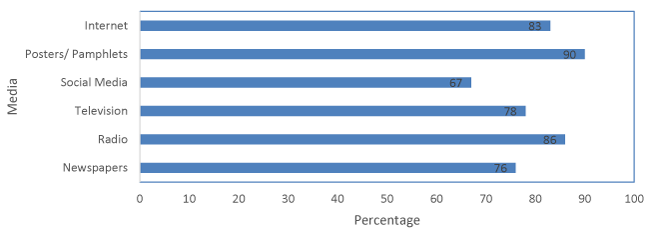
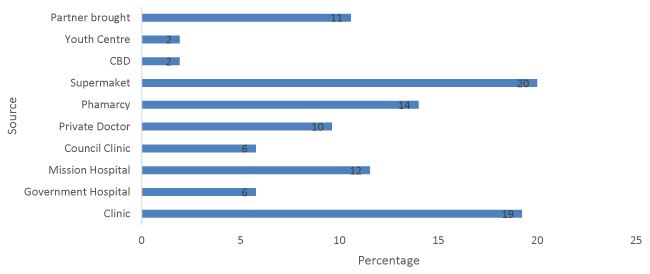
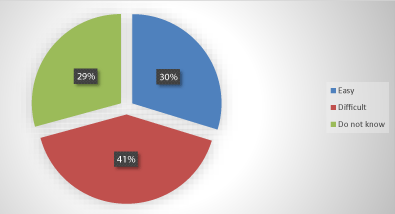
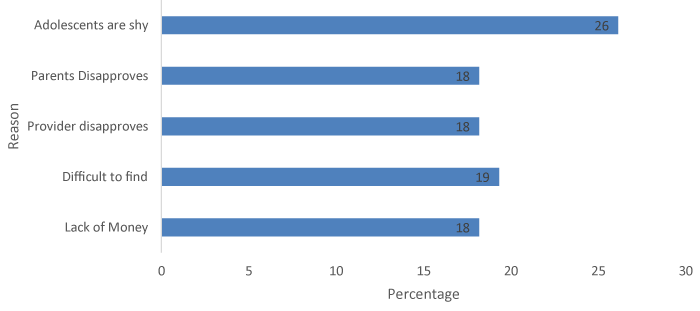
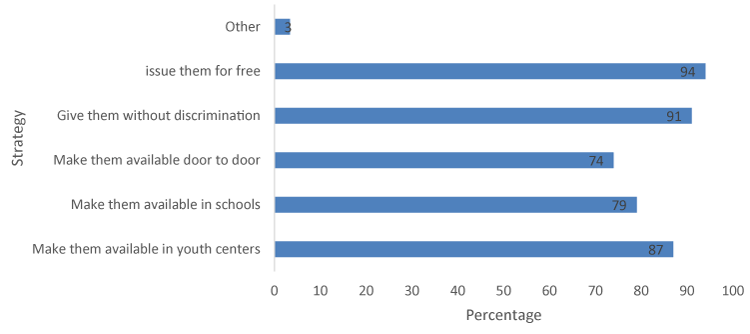
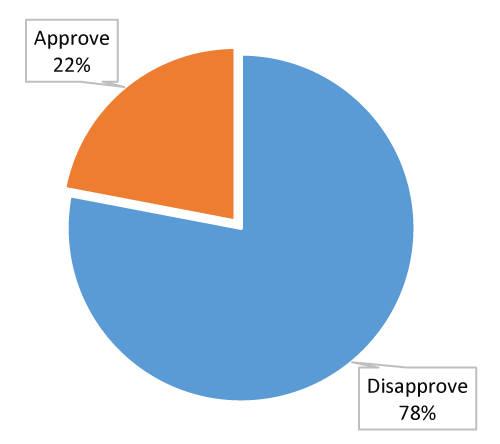
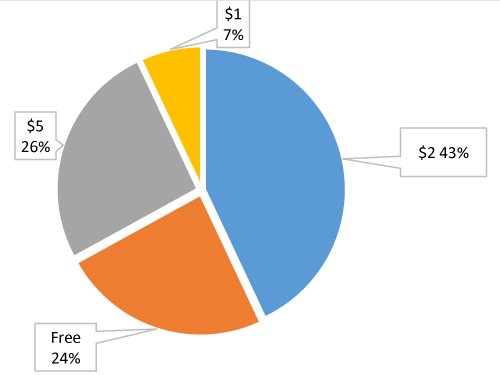
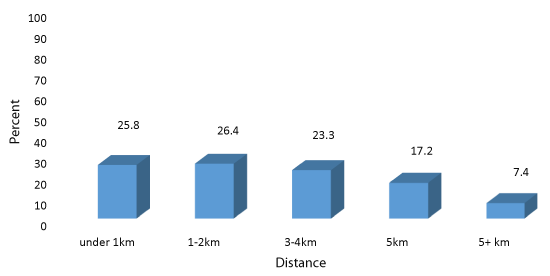
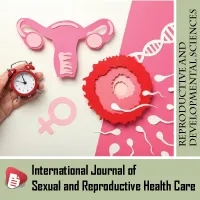
 Save to Mendeley
Save to Mendeley
